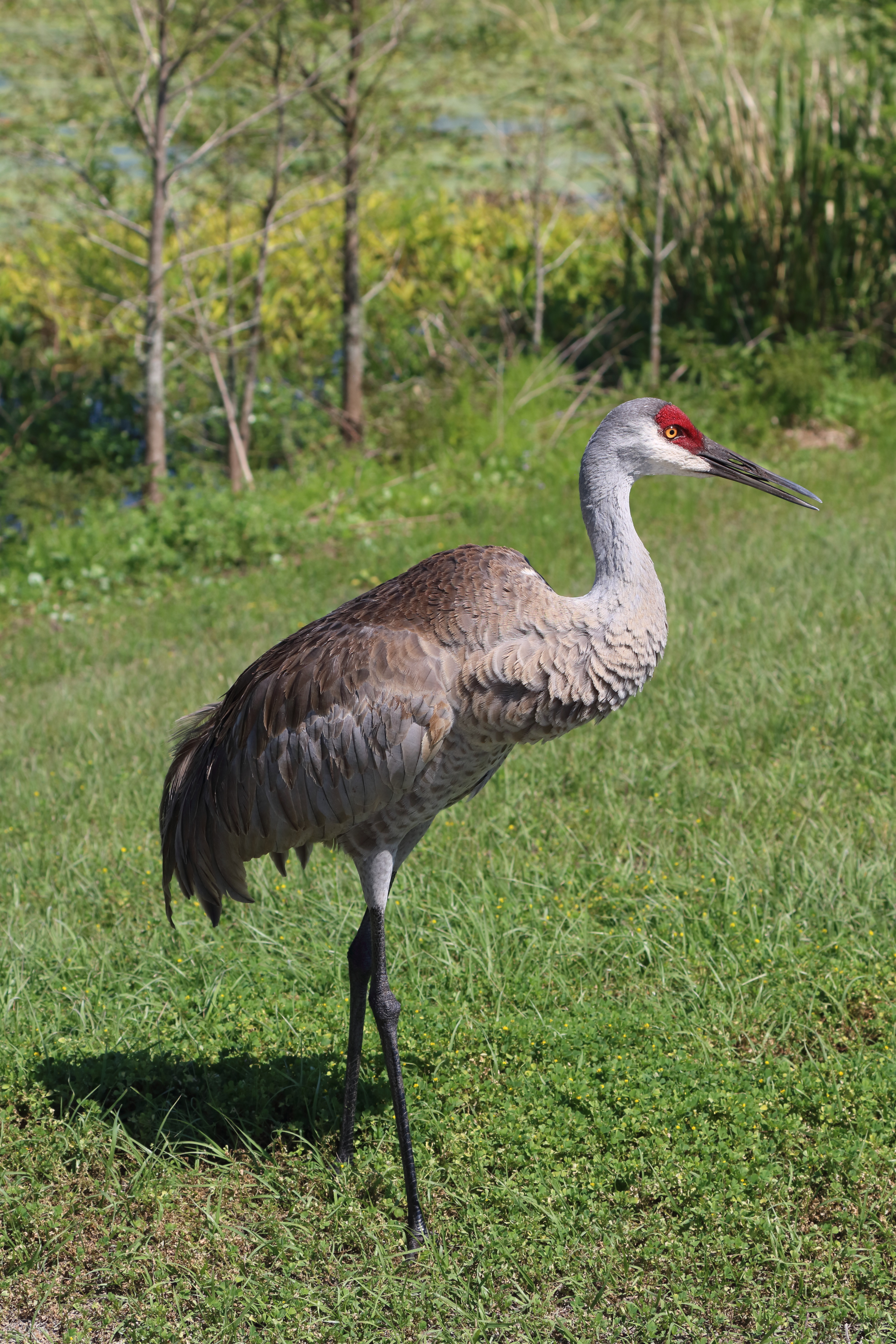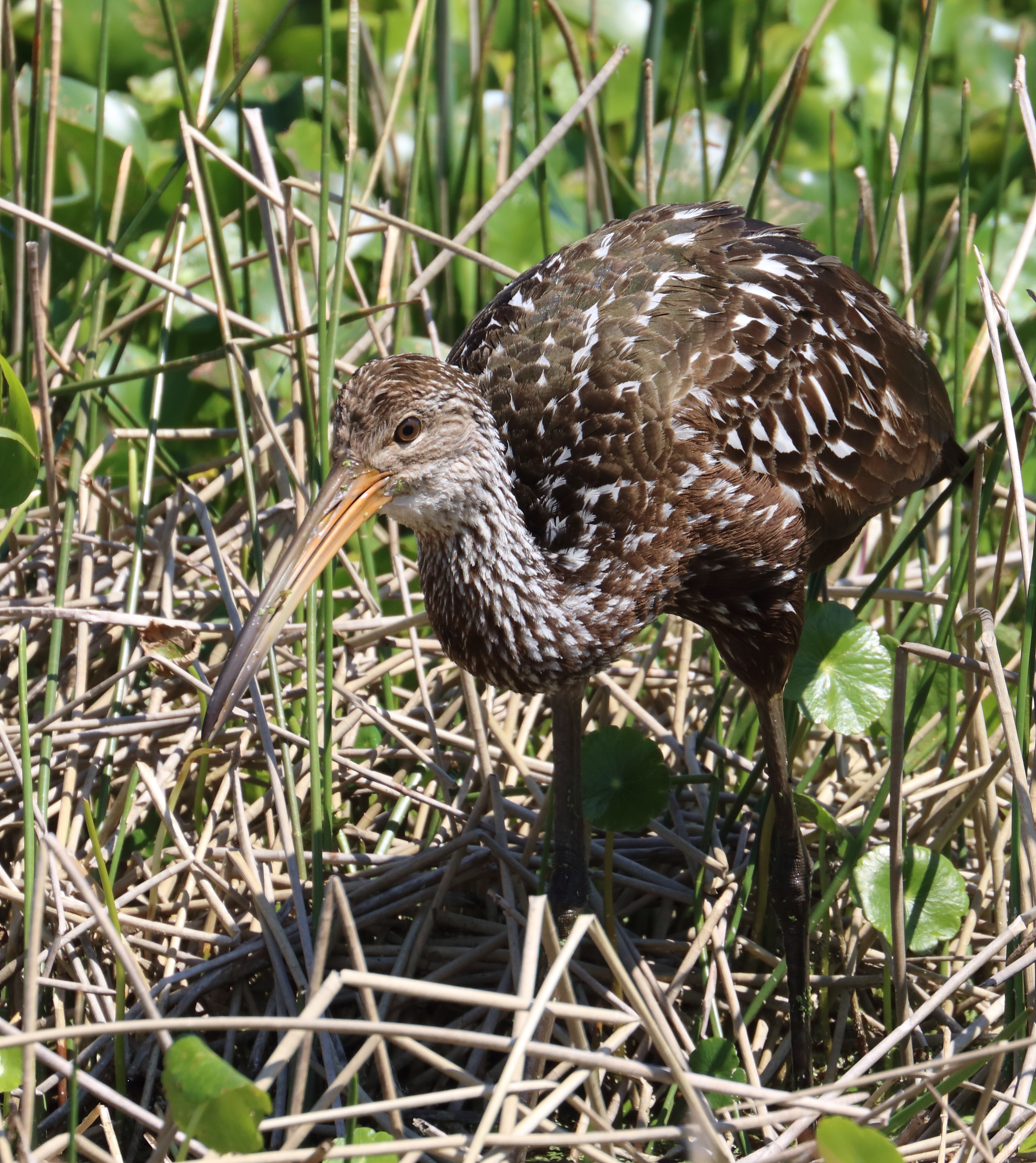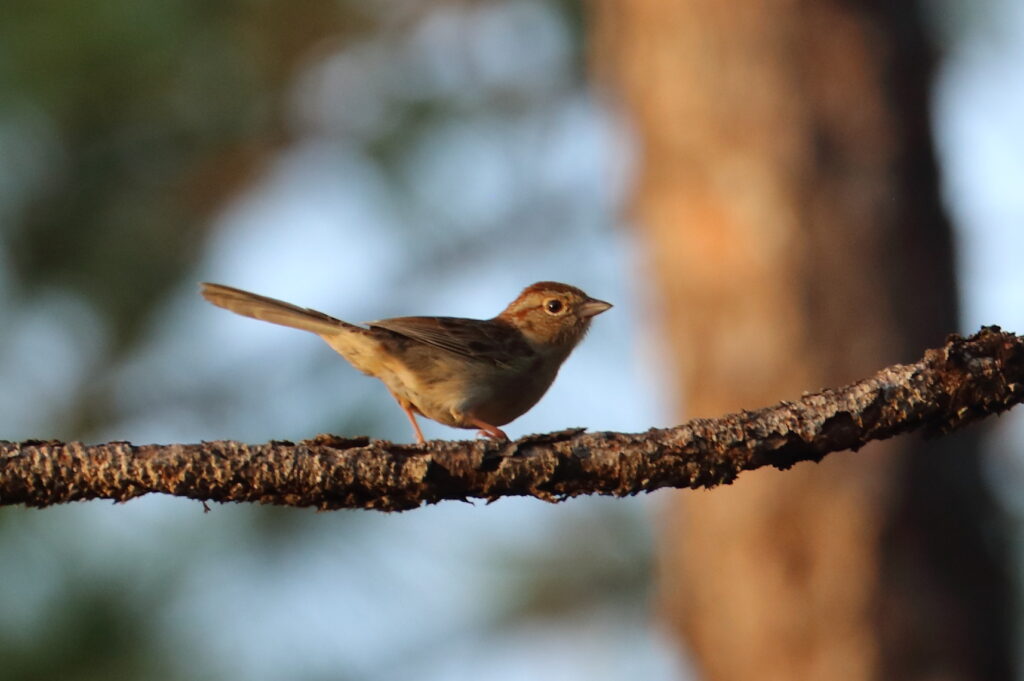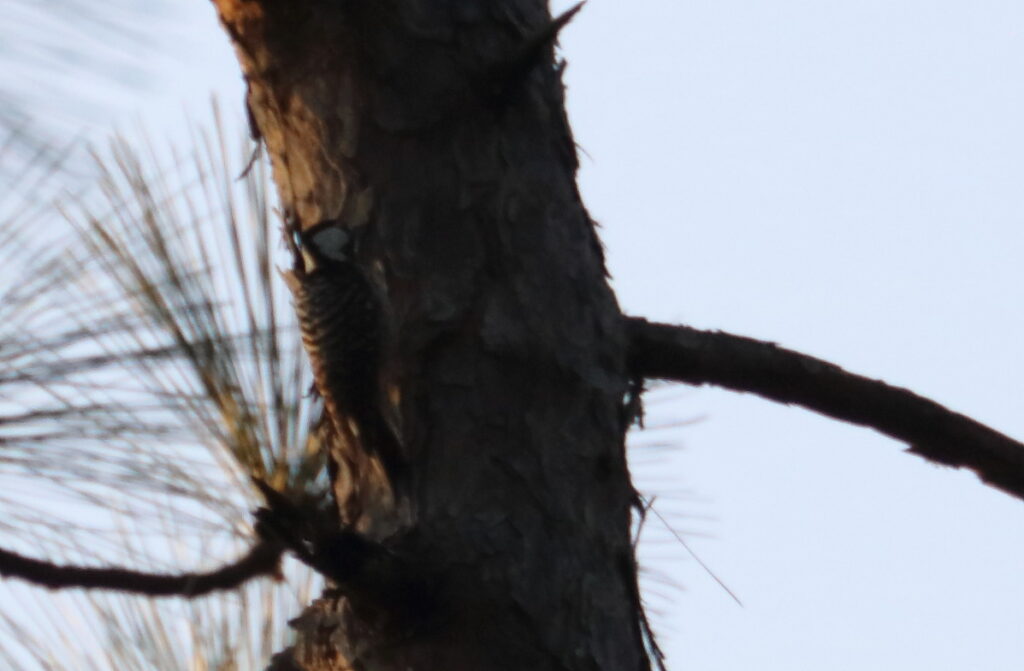We interrupt our New York adventures to bring you Braden’s final post on his and Nick’s epic Florida adventure. As you’ll see, it was a wild ride. Tomorrow we will resume New York with our visit to Central Park. You won’t want to miss it!
A loud bang shook the car as we sped along the highway through the worst rainstorm I’d ever experienced. I looked at Nick.
“Did you hear that?? That lightning bolt almost hit us!”
We’d been driving through this hurricane-level rain for about fifteen minutes by now, gripping the edges of our seats as Nick avoided large puddles and watched the lights of the cars in front of us. After reading about flash floods, I had my fingers crossed that our car wouldn’t get swept away. Thankfully, after about half an hour, the water stopped pouring from the sky just as suddenly as it had started, and we celebrated by driving north towards Alabama, with one last place to bird before the sun went down.

That morning had been a rollercoaster of bird-related emotions. We awoke at dawn, saying goodbye to even more Chuck-wills-widows as we drove to a large pineywoods preserve in search of the specialty birds we’d missed on the drive down. While yet again the beauty of this southeastern pine forest dazzled us, we only got fleeting glimpses of a Bachman’s Sparrow, and left the preserve disappointed. Next, we sidled up to a cemetery, home to a wintering population of Henslow’s Sparrows. We stomped around in the thorns for roughly forty minutes, leaving with no sparrows and legs covered in scratches. In a last ditch effort to get a new species for the trip, we found a small park in Gainesville home to a population of Red-headed Woodpeckers. Thankfully, Nick spotted them, flying around a group of burned snags in the distance.
We grabbed McDonald’s in Gainesville and headed North, planning to stop at several more spots for Bachman’s Sparrow before booking it towards the Alabama border. As we left town, though, my dad called me.
“Hey guys, how’s it going? Have you guys been to Sweetwater Wetlands yet?”
“No,” I said, looking at Nick slightly confused, “What’s there?”
“Snail Kites! And a bunch of other cool things.”
“Wait, really?!” I said, quickly pulling the hotspot up on eBird. Sure enough, Snail Kites had been seen there yesterday, and seemed to consistently visit the park. Unfortunately, the wetlands were in the opposite direction of where we wanted to go. After a brief discussion, we decided to go anyway—after all, Snail Kites were still one of our biggest targets on the trip. We’d had no idea they could still be found this far north, but if we had one last shot at them, why not take it?
We pulled up at the wetlands, putting Dixie in Nick’s backpack and starting our speedrun of the hotspot. The area was a large, freshwater marsh, divided by gravel trails quickly warming up under the midday sun. We split up, trying to cover as much ground as possible. Soon, it became apparent to us that there were indeed birds here.
Warblers and vireos serenaded us from the massive live oaks standing in the entryway to the area, and water birds were everywhere. Many of these were fearless, too—I managed to get great photos of both Sandhill Cranes and Limpkins standing less than ten feet from me. The Limpkins signaled that there were snails around, and we kept careful eyes on the sky as we walked. Me and Nick met up after half an hour.

“Any kites?”
“Well, there are some over there. But they’re Swallow-tailed, not Snail.”
“Me neither. I heard a King Rail over here, so we could probably play for that…wait. Are those harriers?”
Nick pointed behind me at three distant raptors soaring behind us over the marsh. I raised my binoculars. The birds were brown, with white rumps and slender wings, two features common to Northern Harriers. However, they were flying differently. The birds slowly drew nearer, and before long, we could see their striped faces, indicative of juvenile Snail Kites.
“Snail Kites!” Nick yelled, and we high-fived as we watched one of our top targets for the trip fly closer to us. While the kites never got as close as the Swallow-taileds on our first day, we still got decent views. We’d only seen these birds because my dad had been following our adventure and found us a reliable spot to look for them!

Now, as the rain on the highway subsided, I began to reflect on the trip. It had been an absolute whirlwind of fun and disappointment, euphoria and frustration. Had it not been for Sweetwater Wetlands, we would have missed a significant chunk of our targets for the trip (including up-close Sandhill Crane and Limpkin). We’d chased many birds and came up short often, although we had a few successes with the flamingo at St. Marks and grassquit in the Keys. We’d driven hundreds of miles and dozens of hours, sacrificing sleep and food for the birds. And we’d seen so much of the country too, despite only truly getting to know one state. Florida had continued to amaze me, with its extensive saltmarshes and stunted mangrove forests, tacky fishing villages and five-star hotels. We’d birded in so many habitats I hadn’t even realized existed—Florida savannah scrub, Caribbean Pine Rockland, sawgrass glades and urban parks covered in animals from every continent.

As for the birds, we’d done pretty damn well. We’d found success on about half of our chases, missing stuff like the Smooth-billed Ani and Black-headed Gull finding other rarities like the Black-faced Grassquit in the Keys. Thanks to Sweetwater Wetlands, we had hit most of our targets, only missing the Mangrove Cuckoo (which, it turned out, it was the totally wrong season for) and several of the Miami specialties, plus Bachman’s Sparrow, which we still had a shot at. I’d obtained some of the best photos I’d ever gotten, including Prairie Warbler and Blue-headed Vireo, and really gotten to know several species that I’d had little to no experience with prior to the trip. The two species that topped my “Bird of the Trip” list were the aforementioned Prairie Warbler and Swallow-tailed Kite. I’d “discovered” an entirely new breeding population of the warblers, having had no idea that this species could thrive in coastal Floridian mangroves, and learned to recognize their buzzy, rising song every time Nick and I had set foot in that strange, coastal habitat. The kites had accompanied us everywhere we’d gone, and we’d seen them soaring above us almost every day of the trip, not discriminating between any certain habitat. Even after I returned to Maine the next day, it was hard to break the habit of scanning the skies for these sharp-looking black and white birds.

As our car raced towards the Alabama border, Nick and I decided to make one last stop. We were driving past Pensacola, where I’d gone for Thanksgiving the previous fall, and we headed north, heading to Blackwater State Forest following a Google Maps pin that supposedly had Red-cockaded Woodpeckers. The Honda Pilot pulled over on a dirt road as the sun began to set, dangerously low on gas, and we jumped out, cameras and binoculars in hand. Dixie immediately took off into the tall grass, covering herself in the mud formed by the intense rainstorm that had just ended. The longleaf pines towered upwards around us—this was the healthiest patch of this habitat we had seen during the whole trip. Suddenly, as we began walking, a melodious song echoed across the pine savannah.
“Bachman’s Sparrow!” said Nick, whipping out his phone to play for the bird. Almost as soon as the song escaped the phone’s speakers, a small, brown sparrow zipped towards us, landing on the low branch of a tree. I raised my binoculars, and sure enough, there it was–a bird I’d searched for and missed half a dozen times in the last six months. The bird’s plumage was not particularly special, but the music it created stuck with me for hours after we left. Several more sparrows began singing from the grass as the sun set, and were joined by a chorus of Pine Warblers and Brown-headed Nuthatches. On our way back to the car, we suddenly heard some loud calls similar to that of a Hairy Woodpecker. We looked over in the trees just in time to see a family group of Red-cockaded Woodpeckers fly in, moving up and down the pines energetically. I walked off into the grass in an attempt to get some photos, and called my dad back.

“We got the woodpeckers…hell, we got everything!”
We’d ended the trip right where we’d started, in these strange, fire-dependent southeastern forests. Not everything had gone right, but Nick and I had gotten a great story out of it. We’d seen so many birds, and mammals, and plants, and reptiles and more, and as I boarded the plane from New Orleans the following morning, wearing clothes that hadn’t been washed in a week and clutching my camera and binoculars, I smiled. Florida had dragged me in, and I couldn’t wait to return to the land of the grass pines.
Trip Statistics!
Miles Driven: 2,100
Hours Driven: 31
Bird Species: 197
States Driven Through: 4
Counties Driven Through: 43
Life Birds: 23
Year Birds: 143
Bird(s) of the Trip: Prairie Warbler, Swallow-tailed Kite and Bachman’s Sparrow
Birds to Date for Braden’s Big Year: 244 (at end of Florida trip)

What an adventure! This was great reading.
Great read!
Thank you, Bill! I’ll pass it on to Braden 🙂
Loved all the installments from the dedicated bird-chasing orno-correspondents! Youth not wasted on the young in this case, lol. Love seeing the trip stats too. Nice to hear that old man Sneed is still on the ascending side of the hill.
We also found our life Bachman‘s Sparrow immediately after an intense rain. They must like to come out and sing after hunkering down.
Very interesting, Jerry! I’ll pass it on to Braden and Nick!
Loved this final chapter of Nick and Braden’s bird adventures:)
My fav lines this time– The bird’s plumage was not particularly special, but the music it created stuck with me for hours after we left. Several more sparrows began singing from the grass as the sun set, and were joined by a chorus of Pine Warblers and Brown-headed Nuthatches.
What a great time for both of them. As much as I love Braden– kind of glad I wasn’t the person next to him on that flight back!
Nice passages, huh? And that’s funny about the plane flight. I had the same thought!